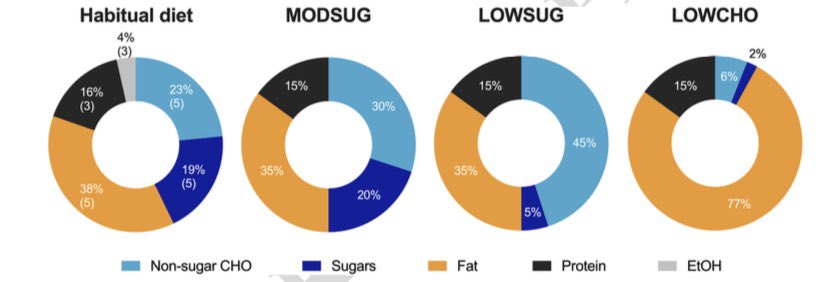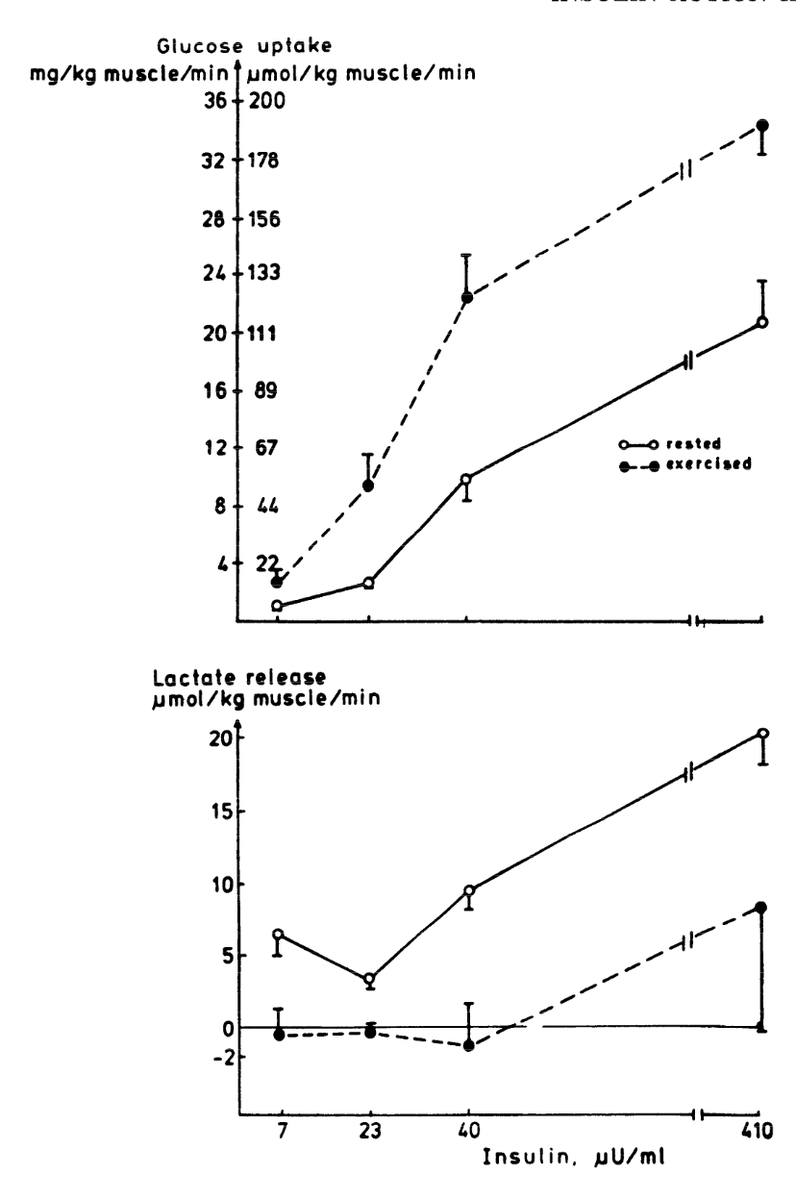
If you start running daily and burn 500 kcals on the🏃♀️will this increase total daily calorie burn by 500 kcals or not?
Yes = ADDITIVE (Panel A)
No = CONSTRAINED (Panel B)
Take the poll👇 & read the 🧵to find out more
1/14
#metabolism #energy
Yes = ADDITIVE (Panel A)
No = CONSTRAINED (Panel B)
Take the poll👇 & read the 🧵to find out more
1/14
#metabolism #energy

Does increasing physical activity directly add to total energy expenditure (ADDITIVE)
or
is total energy expenditure constrained by compensatory reductions in other components (CONSTRAINED)?
2/14
or
is total energy expenditure constrained by compensatory reductions in other components (CONSTRAINED)?
2/14
This question has become increasingly discussed over recent years.
Our latest paper critiques the evidence for and against these models.
🔗doi.org/10.1016/j.advn…
Big team effort from @DrDylanThompson @GregLJMU @Alan_Batterham
3/14
Our latest paper critiques the evidence for and against these models.
🔗doi.org/10.1016/j.advn…
Big team effort from @DrDylanThompson @GregLJMU @Alan_Batterham
3/14
First, a reminder of the components of energy expenditure (daily calorie burn)
SEE = sleeping energy expenditure
RMR = resting metabolic rate
DIT = diet-induced thermogenesis
AEE = activity energy expenditure
TEE = total energy expenditure
PAL = physical activity level
4/14
SEE = sleeping energy expenditure
RMR = resting metabolic rate
DIT = diet-induced thermogenesis
AEE = activity energy expenditure
TEE = total energy expenditure
PAL = physical activity level
4/14

One piece of evidence to support “constraint” is that total energy expenditure (TEE) seems to plateau at higher accelerometer counts.
Or does it?…
5/14
Or does it?…
5/14

Using the same data, a linear model also seems a reasonable fit.
Which is a better fit? 🤷
One problem is limited data at the extremes if high physical activity.
What about other evidence?
6/14
Which is a better fit? 🤷
One problem is limited data at the extremes if high physical activity.
What about other evidence?
6/14

Using the impressive DLW database, some argue that a lack of a perfect relationship between BEE (basal energy expenditure) and TEE supports “constraint”.
It’s one possible explanation, but another very likely explanation is regression dilution from variation in measurement
7/14
It’s one possible explanation, but another very likely explanation is regression dilution from variation in measurement
7/14

Another piece of evidence used is observations of a negative relationship between BEE and activity energy expenditure (AEE).
So as we ⬆️ AEE, we ⬇️BEE right?
Not so fast…8/14
So as we ⬆️ AEE, we ⬇️BEE right?
Not so fast…8/14

AEE measured with DLW involves deducing (TEE ➖BEE). The same data are involved in both axes.
This can create spurious correlations from mathematical coupling.
The e.g. below uses simulated data generated to be independent, yet deducing AEE creates a spurious correlation
9/14
This can create spurious correlations from mathematical coupling.
The e.g. below uses simulated data generated to be independent, yet deducing AEE creates a spurious correlation
9/14

When AEE and BEE were independently measured, we observed no relationship with BEE.
(Real data from @O_Chrzanowski doi.org/10.1123/ijsnem…)
10/14
(Real data from @O_Chrzanowski doi.org/10.1123/ijsnem…)
10/14

During ultra-endurance exercise, measured TEE is slightly less than predicted, but still closer to “additive” than “constrained”
The difference is interesting and might include compensation in NEAT, among other things.
So far the data are observational, what about RCTs?
11/14
The difference is interesting and might include compensation in NEAT, among other things.
So far the data are observational, what about RCTs?
11/14

The few RCTs using DLW show som disconcordance between predicted and measured TEE.
But in the long-term RCT, this was also evident in the control group, suggesting constraint is not the main reason for discordance.
12/14
But in the long-term RCT, this was also evident in the control group, suggesting constraint is not the main reason for discordance.
12/14

Other considerations:
-measurement methods 📏
-statistical approaches 📈 -accounting for body size and composition 🧍🧍♀️
-equivalence vs null-hypothesis testing 📊
-accounting for energy balance and metabolic adaptation ⚖️
-substitution and behavioural compensation 🏃
13/14
-measurement methods 📏
-statistical approaches 📈 -accounting for body size and composition 🧍🧍♀️
-equivalence vs null-hypothesis testing 📊
-accounting for energy balance and metabolic adaptation ⚖️
-substitution and behavioural compensation 🏃
13/14
Check out the full paper for more…
Main conclusion, more data needed from RCTs with appropriate measurements to know if additive or constrained models best represent reality.
14/14
Main conclusion, more data needed from RCTs with appropriate measurements to know if additive or constrained models best represent reality.
14/14
• • •
Missing some Tweet in this thread? You can try to
force a refresh





















